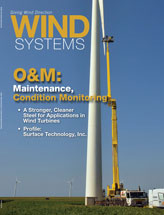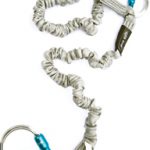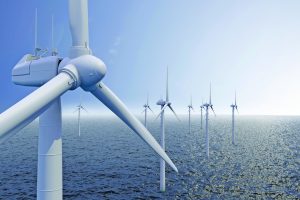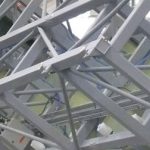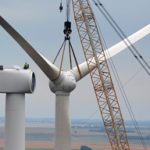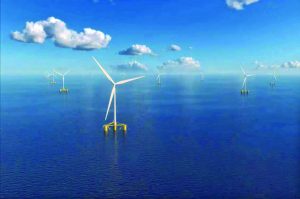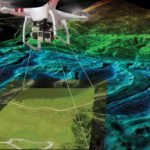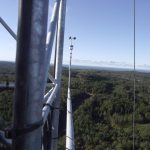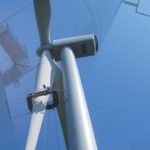In the midst of the recession plaguing the United States following the Arab oil embargo with oil being both scarce and expensive, plastic became the new material of choice for many manufacturers who sought to replace heavy metal parts with lighter, less-expensive alternatives. However, there was one problem. There needed to be a way to apply metal coatings to these plastic nonconductors, and, at this point in time, the technology to do so was not yet well developed. That is, not until Surface Technology entered the market in 1973.
According to Michael Feldstein, the son of the company’s late founder, Dr. Nathan Feldstein, and the current president and director of innovation, Surface Technology developed the key technology on how to more effectively activate plastic in order to achieve a metallurgical bond of a subsequent coating. This technology was of even greater use in the growing computer and electronics industries where new non-conductive materials like printed circuit boards needed to be coated with specialty metal plating.
“Our original focus on R&D of new methods of plating onto plastics and other nonconductors was vitally important in the 1970s as energy prices soared,” Feldstein said. “This work demonstrated the need for improvements in the plating itself, so we’ve evolved tremendously to pioneer important new varieties of electroless nickel (EN) and composite electroless nickel (CEN) coatings where fine particles are incorporated into the plating to add or enhance properties.”
As the company became more involved in this industry-changing endeavor, it became apparent that in addition to the demand for coatings on nonconductors, there was also a growing need for advanced coatings. According to Feldstein, this meant that coatings didn’t only need to have the properties of the metal in the coating — such as nickel, chrome, or nickel-phosphorous — but they also needed synergistic properties.
To address this need, Surface Technology optimized a process that incorporates fine diamond particles into the metal coatings for enhanced hardness, wear resistance, and heat transfer, as well as other materials such as ceramics and fluropolymers into coatings that required low friction or release features.
“The utility of such advanced electroless coatings is often most advantageous on more intricate parts with complex geometries,” Feldstein said. “That required overcoming a number of significant inherent challenges, including stepping away from the age-old practice of coating metals by electroplating, which is when electricity is used to make the coating adhere to the metal object.”
âFigure 2
Coatings are essential in many applications for proper performance and protection. However, according to Feldstein, choosing the best coating for components in the wind energy industry can be challenging because these parts come in a wide array of shapes, sizes, and base metals and are used in an equally broad range of climates and usage conditions (e.g., gears, bearings, friction devices, and rotors inside of the gearbox and turbine).
“Applications in the wind energy industry are especially challenging,” Feldstein said. “Wind turbines are used in countless environments, demand high performance, and involve costly downtime. This requires material and surface properties that are more advanced than the age-old coatings. These factors make the applications most suitable for our advanced composite electroless coatings that offer a synergy of properties.”
One way that coatings can enhance wind industry applications is through CEN plating. According to Feldstein, EN is a reliable chemical process with many inherent features that are well-suited to the wind energy industry, including corrosion resistance and perfect conformity to complex geometries. Composites are formed with the addition of super-fine particles to the EN, which provide hardness, wear resistance, low friction, release, heat transfer, and high friction, as well as identification and authentication properties.
In other words, the CEN plating takes advantage of the synergies between EN and the added particles in order to enhance the metal’s existing characteristics and potentially create new properties, thereby applying a class of coatings with a wide variety of performance and economic advantages to the diverse and demanding components used in the wind energy industry.
As a global leader in composite electroless coatings, Surface Technology sets itself apart in the industries it serves through its dedication to research and development, a legacy that was left behind by Nathan Feldstein and that the company continues to uphold today.
“Surface Technology engages in the greatest level of R&D for new coatings in our field, and the optimization of coatings to best serve customer needs,” Feldstein said. “We enjoy the challenge of new applications, and the wind energy industry is outstanding in developing and fostering those.”
One example of a new property that Surface Technology has added to its synergistic composite coatings as well as its traditional platings, paints, and powder coatings is the element of identification and authentication.
“Through a partnership with a company that manufactures forensic materials used to protect national currencies against counterfeiting, we are able to add these materials into our coatings, which allows companies to identify their parts for maintenance, warranty, and tracking purposes,” Feldstein said.
One way Surface Technology accomplished this and applied it to wind industry applications was by incorporating particles with light-emitting properties into EN coatings. According to Feldstein, these coatings appear as normal EN under traditional lighting, such as sunlight or fluorescent light. However, under ultraviolet (UV) light, they emit a bright colored glow.
“A person only needs to shine a hand-held, battery-operated UV light on the components to display the light emission of the specialized coating to confirm the authenticity of the parts,” Feldstein said.
This technology can also be used to show wear and to avoid damage to the part itself.
“With a thin layer of a light-emitting coating between the substrate and the functional coating, an operator can inspect the part periodically with a portable UV light while the part is still in use,” Feldstein said. “If the colored light shows up, it is understood that the functional coating has worn away. The part can then be recoated and reused before substrate damage to the part itself occurs and before inferior product is produced.”
âFigure 5
According to Feldstein, this feature can be especially beneficial in the wind energy industry to allow the inspection of a component without the high cost of part removal or downtime.
“Aside from our specialized composite coatings, Surface Technology is uniquely able to work with customers in the wind industry to optimize coatings for their needs,” Feldstein said. “We especially enjoy the opportunities wherein our customers’ development teams work with us to engineer new parts that take advantage of the performance benefits of our coatings, like when they are able to use lighter base materials that are coated with one of our wear-resistant coatings to save on overall weight and cost.”
Moving forward and following the five-year extension of the federal production tax credit (PTC), Feldstein said that as the U.S. wind energy industry continues to grow, so will Surface Technology in order to meet its demands.
“We are proud to be moving to a new, much larger customized facility with even greater capacity,” Feldstein said. “This will expand our ability to apply our specialized coatings to a greater number and size of parts for use in the wind industry.”
For more information, go to www.surfacetechnology.com.



















